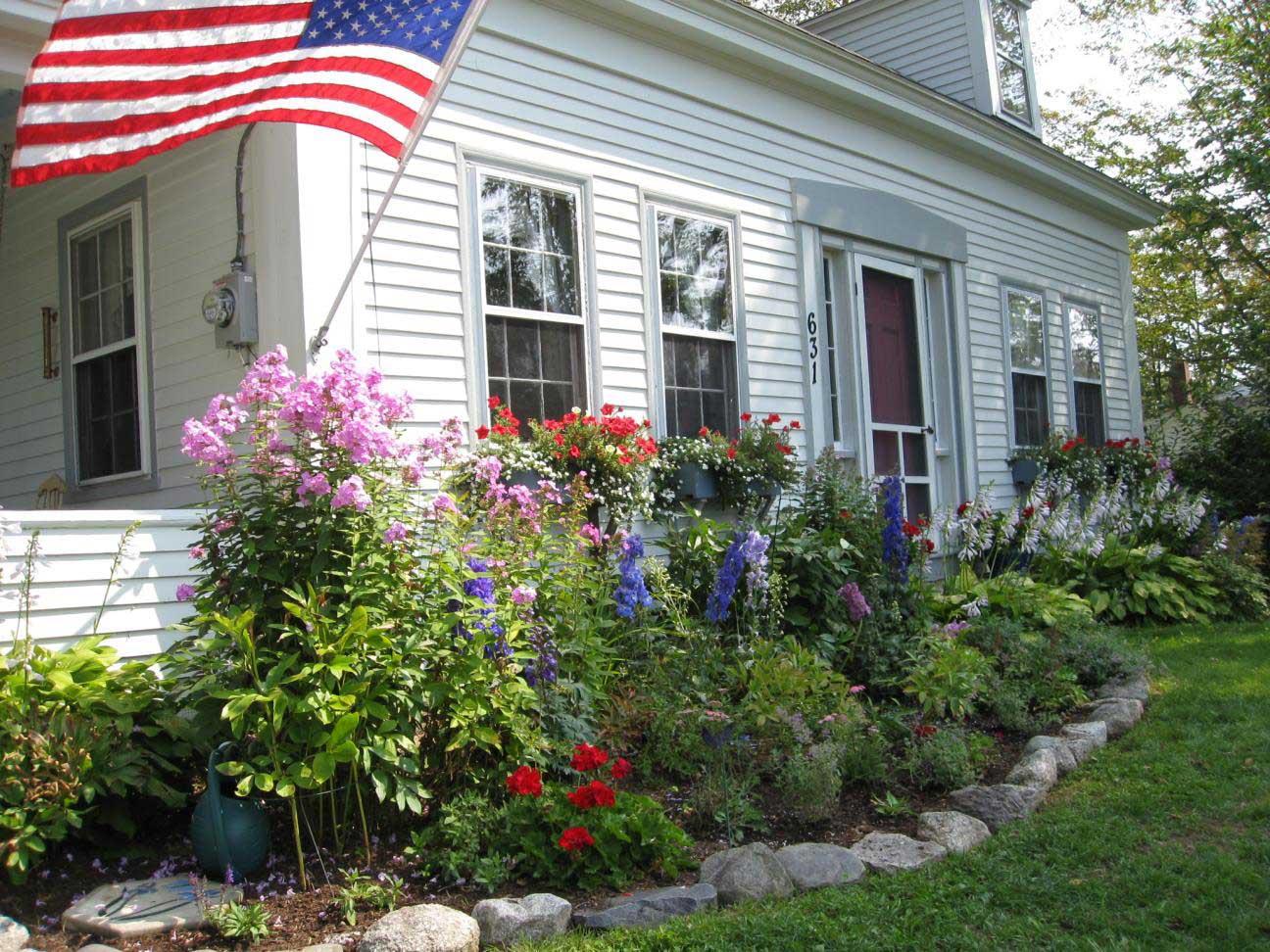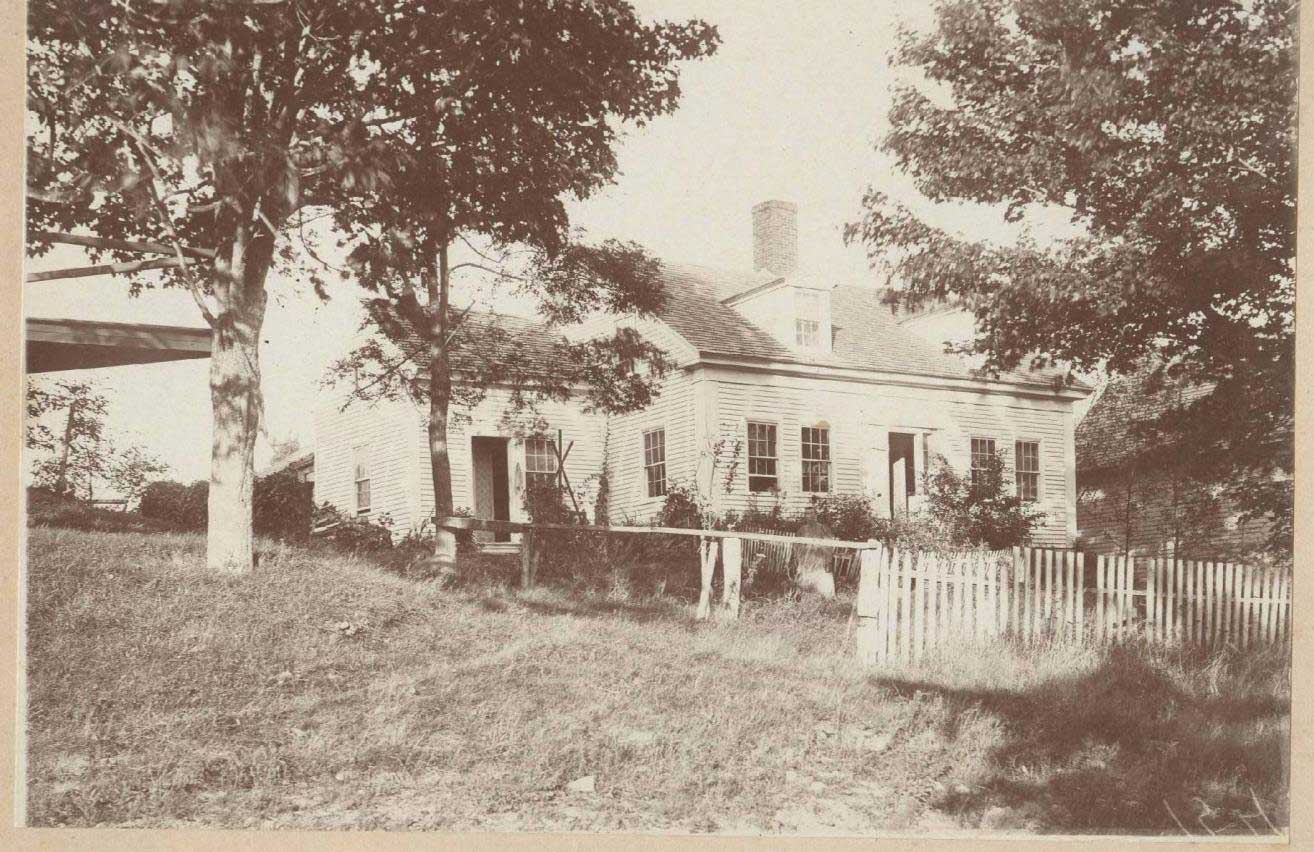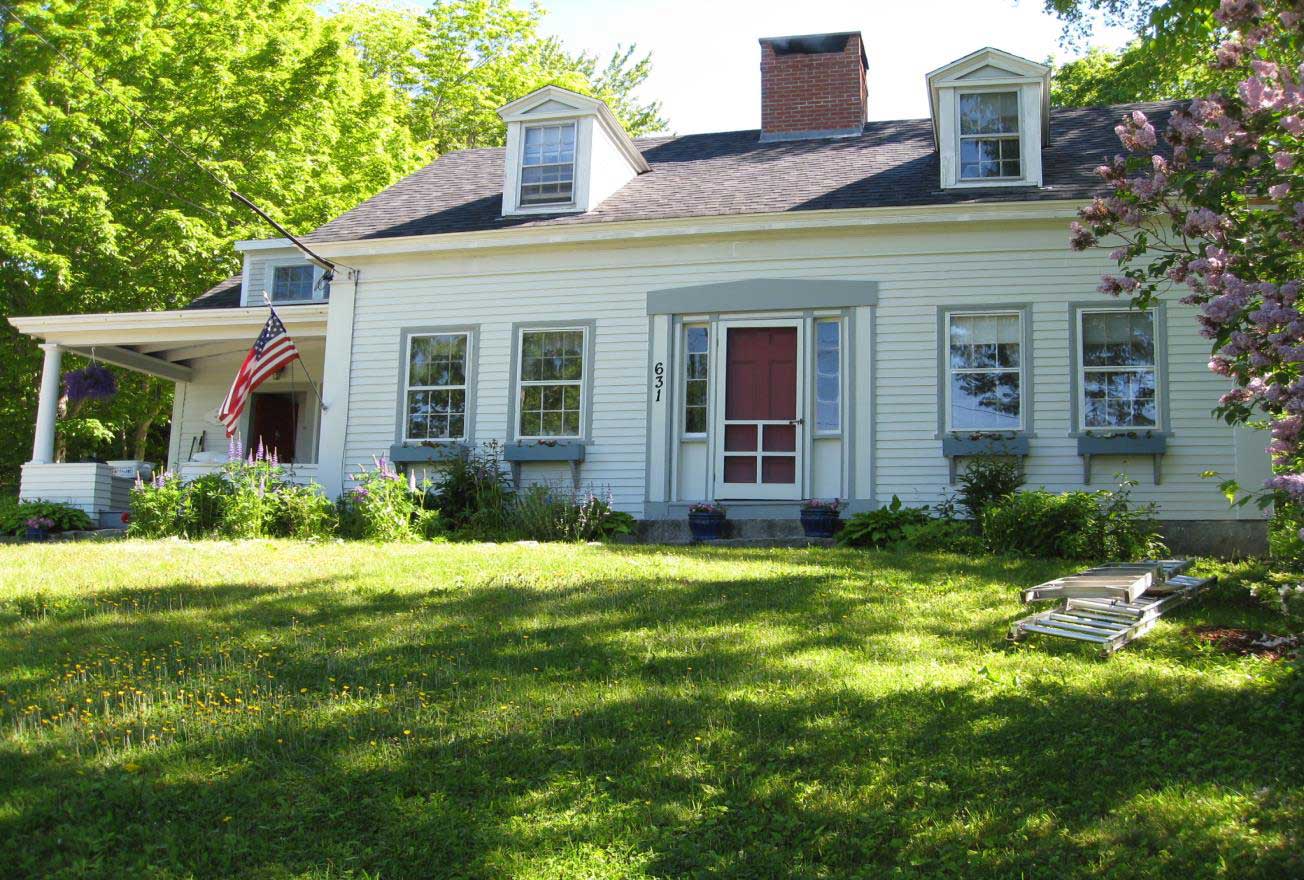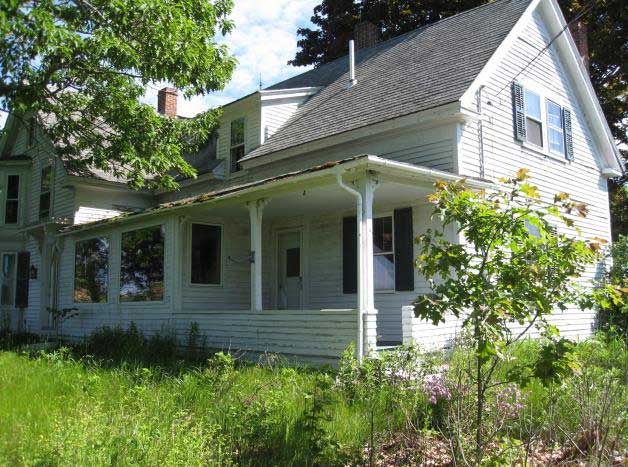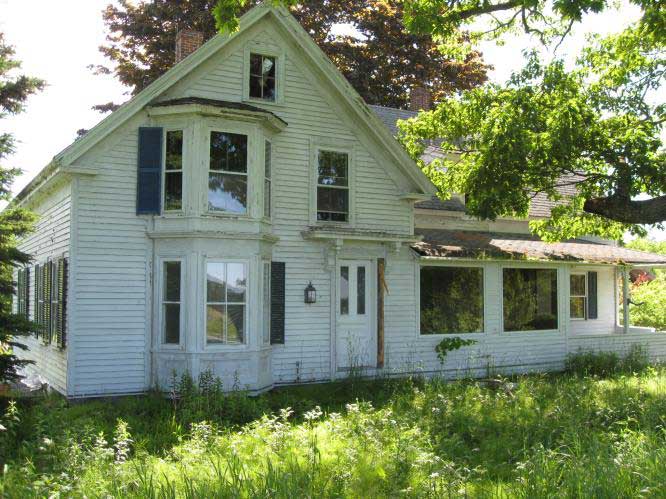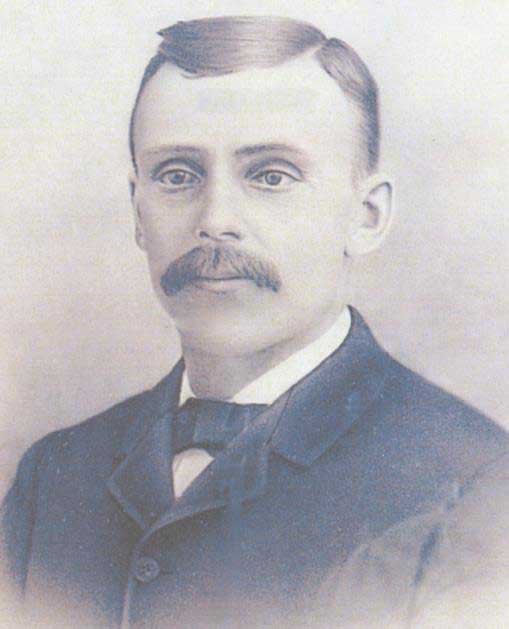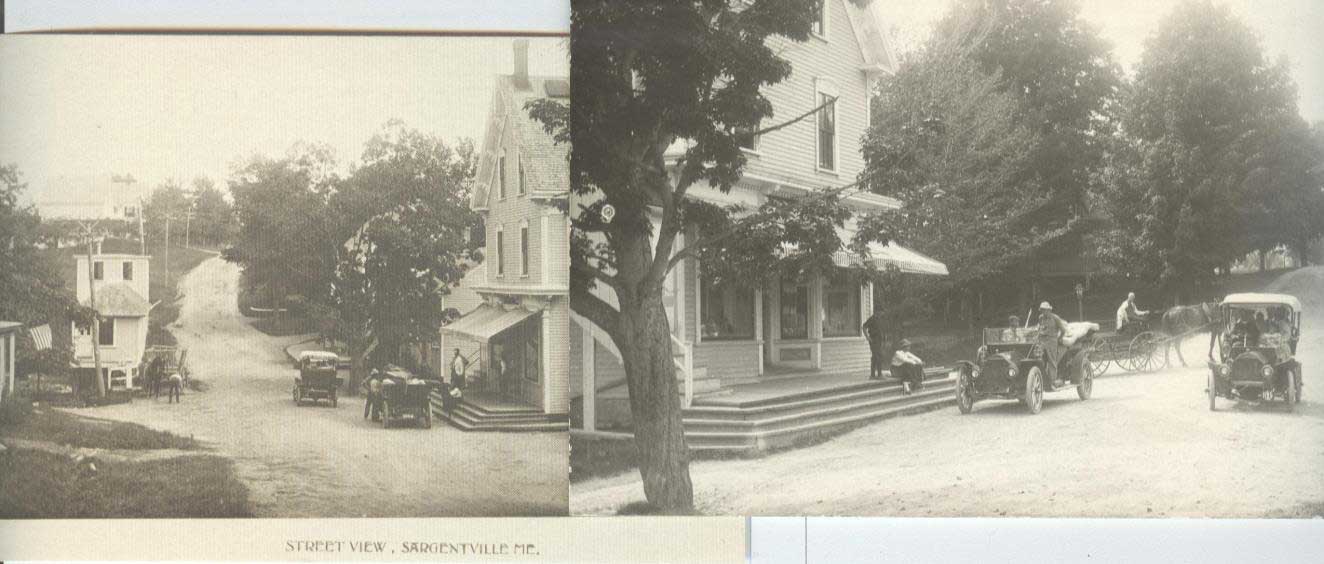The Men, Women, Children and Stories of the Sawyer, Currier, Simmons Homestead
Pamela Simmons
Redwood City, California
2012
The people of the Sawyer, Currier and Simmons homestead
In 1847 Abel Sawyer finished building the house that was to be home to him and his new bride, Martha Marks Brown. In 1850 their daughter Isadora Amelia was born and, sadly, in 1853, 30 year old Abel died of tuberculosis. Abel’s wife Martha continued to live in the house until her death in 1904. Isadora, “Dora”, grew up in the house, and left it only for the 5 years she was married to Gilbert Richard Currier. Dora and Richard had one daughter, Martha Maria Currier, born in 1884. When, in 1885, Richard died of tuberculosis Dora moved back to the house and lived there until her death in 1942. Martha married William “Will” Herbert Simmons in 1913 and they had nine children, two of whom, Margaret and Rebecca, died in infancy. Their surviving children were Martha (“Pat”), Herbert, Richard, David, John, Edward and Mary. These seven children gave Martha and Will 18 grandchildren who have continued the Sawyer, Currier, Simmons line unto the next generation. Martha died following a heart attack in 1961 and Will died in1976 at the age of 84. Their son David Arnold Simmons moved into the house in 1989 and lived there until shortly before his death in 2002 at the age of 82. David deeded the house to his son David Farnum Simmons and it was later acquired by David’s sister Pam. Since then the house has been restored and cared for by David, his wife Ellen, Pam and the rest of the Simmons family.
Abel Sawyer
In 1839, at the age of 16, Abel Sawyer traveled from his home on Deer Isle to Sedgwick, Maine to learn the joiner’s trade (carpentry) with Deacon Samuel Billings.1 His father David was also a carpenter so we can surmise that Abel already had some building skills and perhaps was ready to gain greater expertise by working with Samuel. Samuel died in 1840 but I assume that his son Calvin, also a house-joiner, was another mentor and source of support to Abel. Abel was involved with the Sedgwick infantry and, though he never went to war, he attended training exercises in Sedgwick and surrounding towns. He stayed in close touch with his family on Deer Isle and traveled there frequently to visit or to attend religious services. He was very devout and, according to his 1843-1845 personal journal, attended a service or religious meeting almost daily.2Those same journals also reveal a man who worked hard and was involved with many of the families in Sedgwick and Brooksville.
Abel was involved in building many structures in Sedgwick, and occasionally in Brooksville. For most of 1844, when Abel was 21, he worked for William H. Haskell who is said to have created the plans for his own home and The Sargent House, as well as for the homes of Lucius Bolles Sargent, Wyer Sargent and Abel Sawyer.
In 1846 at the age of 23, Abel bought about one half acre from Wyer G. Sargent for twenty dollars and by 1847 had built the house which is now 631 Reach Road. On November 25th 1847 Abel married Martha Marks Brown (b.7 Dec. 1819, d. 15 Sept. 1904), and they moved into their new home.
Pat Simmons Garroway thought Abel’s own house may not have been completely finished when Abel died just three years after building it and moving in, a suspicion that is supported by the structural variations and late 1800s newspapers discovered in the walls of the upstairs rooms when they were renovated by David and Pamela Simmons in 2005-2012. From this evidence, and old receipts and photos, we believe that the upstairs was finished off around 1890 and the porch was added between 1900 and 1912 by local builder and family friend, Scott Lymeburner.
The Sawyer home, the house that Abel built, is a farmhouse with style. The rectangular windows beside the front door and the transom above it are two of the architectural details that identify the style of the Sawyer home as Greek Revival, a design that became popular in the post-American Revolution 1840s because Americans identified the Greeks with democracy. The house also has wide cornices under the roof-line and a wide band of trim along the exterior parallel edges of the front of the building that add to the Greek temple appearance the builders were trying to emulate. The rounded column on the porch, which was added to the house prior to 1914, complement the Greek Revival style.
Water for the house originally came from a dug well in the cellar but, in 1914, the well went dry. For a short while the family made do with rain water saved in barrels but work soon began to find another water source. Eventually, a 20 foot deep well was dug next to the woods road up behind the house and George Higgins’ oxen team was used to bring in the stones to line the well walls. That same well supplied the house until 2012 when a drilled well was put in.
Martha Brown, Abel’s wife, had lived with her parents Edward and Pamela Billings Brown in the Brown homestead on Caterpillar Hill Road.
In November, 1845 Martha began working in the home of Wyer G. Sargent where her aunt Salome Brown was also employed. Wyer took in boarders and, commencing in December of that year, one of those was Abel Sawyer.3 (Appendix 1) This proximity may have allowed them to get to know one another better and they were married in November of 1847.
In 1876 Eliza Billings became the first librarian in Sargentville and in 1877 Martha Brown took on that role, a position she held until her death in 1904. Martha had the library books in her living room, and later, her sitting room until the library building was built shortly after her death.
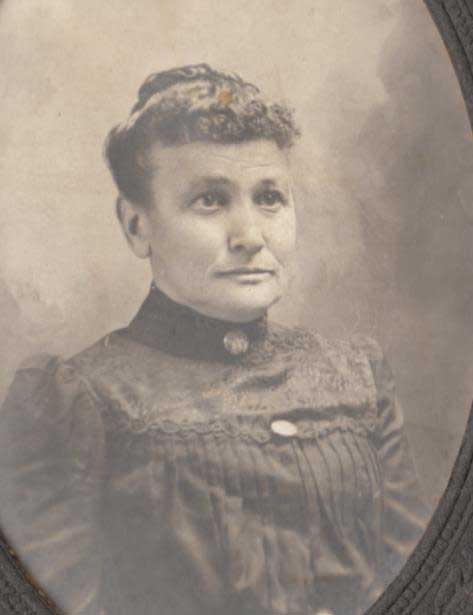
Patience Billings, Martha’s aunt, was the sister of Martha’s mother Pamela Billings Brown. Patience was married to Samuel Billings. We don’t have a picture of Pamela Billings Brown.
Martha’s aunt, Patience Billings who was Pamela’s sister, was married to Samuel Billings, her first cousin, and lived in the Billings homestead at the corner of Reach Road and Caterpillar Hill. It isn’t hard to imagine that Martha would have met and befriended Abel, Samuel’s young apprentice, soon after his arrival from Deer Isle.
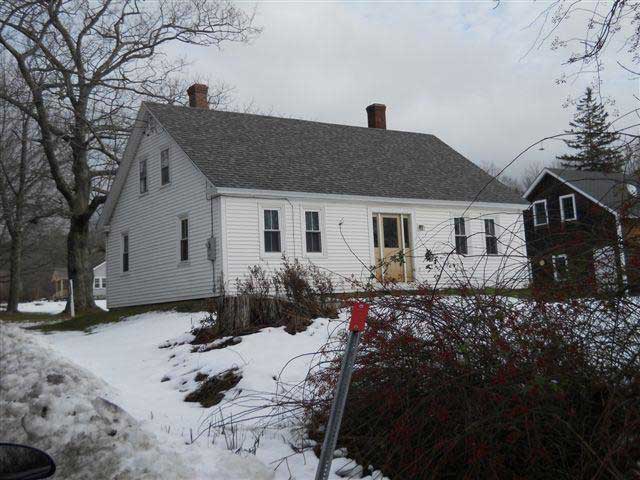
The home of Samuel and Patience Billings was built by Samuel in 1820, the year Maine became a state and was no longer part of Massachusetts.
Martha and Abel’s only child, Isadora Amelia Sawyer (called Dora), was born on November 13th 1850 and on February 18th 1853, at the age of 30, Abel Sawyer died of tuberculosis4, a disease that was common in those days and for which there was no cure. Little Dora was only 2 ½ when her dad died. Without a breadwinner it must have been a hard time for the family.
Though Abel found work as a carpenter, the family survived by producing most of their own food. A garden, chickens, geese, pigs and possibly a cow or two supplemented by deer, rabbits and seasonal fruits/berries and, of course, seafood, were staples. They got molasses, sugar, flour, fabric, thread and other supplies they couldn’t produce at home at Wyer G. Sargent’s store which was just down the hill from their home.
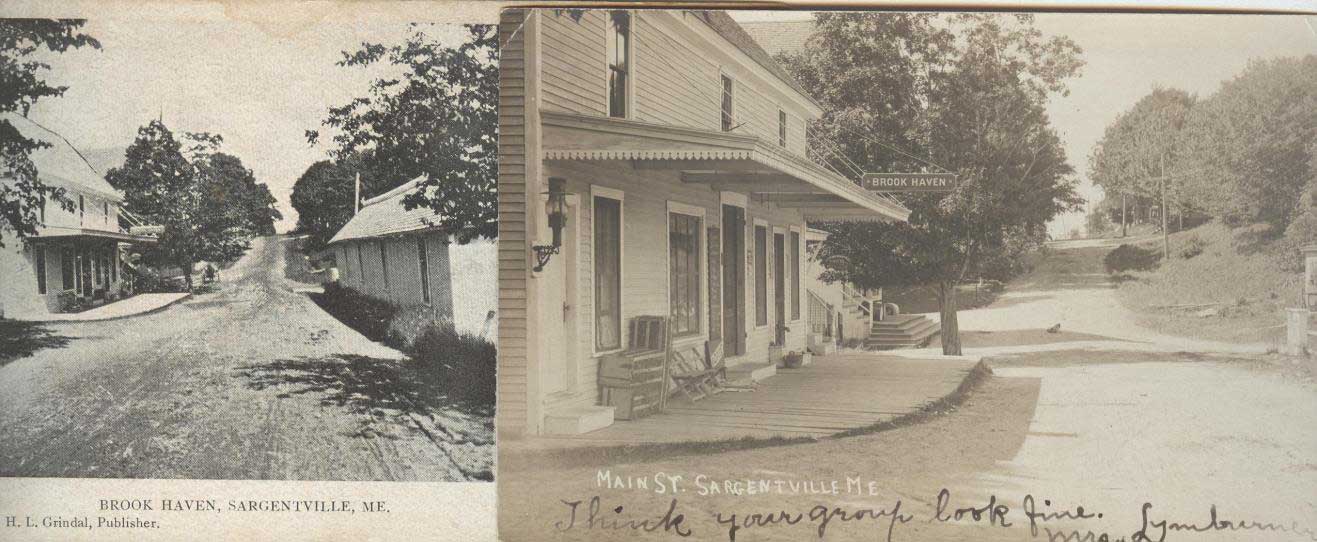
In the early 1900s there was a tea room named Brook Haven that catered to the travelers arriving on the steamboats. Across the road from the store was a bowling alley and a bakery. In these photos the Sawyer home is up the hill and to the right.
Abel Sawyer, House Joiner
As mentioned, the DISHS records state that Abel moved to Sedgwick in 1839 at the age of 16 to apprentice with Samuel Billings. By 1843 Abel, now 20 years old was working in Sedgwick and involved in the community. In his personal journal, 1843-1846 he writes of working for Hezekiah Byard and Reuben Billings and of going to prayer meetings and Sabbath School, usually with the Baptists. He attended almost daily prayer meetings in Sedgwick and Deer Isle and on May 2, 1844 he writes, “Attended Church Conference this afternoon. Had an interesting meeting although religion is quite low in Sedgwick at this time”.
Abel also attended Sons of Temperance meetings with others in town, “attended a temperance meeting at the new Baptist meeting house in this town.” 5 Wyer G. Sargent, a leader in Sedgwick society, was very involved in the temperance movement and helped to organize local chapters. As a town elder, he may have influenced Abel’s opinions on the topic.
A loyal citizen, on July 3, 1843 Abel writes “A very fine day. Wind South west by South. 67thyear of the independence of the United States of America. This is a day long to be remembered by every friend of Liberty and religion.” Abel also did his military duty in Sedgwick and writes in his journal in 1843:
September 2nd– “General muster today at Benjamin Walker’s in Brooksville. Very tiresome to train.”
September 5th-“Attended General muster at North Bluehill”
September 18th-“Proceded on an excursion to Deer Isle with the Sedgwick Infantry. Afternoon returned to Sedgwick.” 6
Martha Currier Simmons always said that Abel built the Wyer G. Sargent house, later owned by the Sweet family and now by Annie Conaway, the Captain Lucius Bolles Sargent house, later owned by Lydia Gower and then by her son Ron Gower, the Captain Jasper Sargent house, later owned by Abby Sargent, and finally his own home in 1847. Purportedly all four houses were built from the same set of plans created by William Haskell Sargent, though all but the Sawyer house have had major renovations since then.7 However, it is more likely that Abel was involved in the building or renovation of some but not all of these houses because, having been born in 1823, he would have been 14 and still living with his parents on Deer Isle when Wyer’s house was built in 1837. Given that men began their careers at a much younger age than is true today it is possible that Abel helped build Wyer’s house but it’s more likely that the lead builder was someone of Samuel or Calvin Billings’ age and experience.
From Abel’s journal we can tell that by 1844 he was working regularly for William Haskell Sargent whose house, now owned by Donald Hale, was built in that year. In May he writes that he did “work on the cellar” of William H. Sargent and by August he writes that he “finished the front door”. Many homes were being built around that time and Abel was involved in a lot of the work being done. In his journal he writes that he worked for Judson Gray and on April 1, 1844 he writes “finish work for Judson Gray, Raised house in afternoon”. He also mentions finishing work on Capt. L.B. Sargent’s house (probably Lucius Bolles Sargent, Lydia Gower’s father) and on August 30, 1844 writes “helped raise John Billings house”. It is probably safe to assume that by this time Abel had a larger role in each of these construction projects than was true when Wyer’s house was built. At one point Abel mentions that he was making 71 cents per day. Probably a decent wage in those days
______________________________
1 Deer Isle-Stonington Historical Society (DISHS), Sawyer Scraps, page 144.
2 Abel Sawyer’s Journal 1843-1846, transcribed by Barbara M. Grindle.
3 Wyer G. Sargent Journal Vol. 1, 1845-1868.
4Personal conversation with Pat Simmons Garroway.
5Abel Sawyer’s Journal, February 19, 1844.
6 Abel Sawyer’s Journal, September 18th, 1843.
7 Neese, Abby Sargent, Sargentville Historical Reminiscences, Courier-Gazette, Inc., Rockland, ME, 1975, page 30.
APPENDICES
APPENDIX 1
Fred Marston was so kind as to give me a copy of the transcribed Journal of Wyer Groves Sargent, Volume 1, 1845-1868. Wyer, Fred’s great, great grandfather, was a prominent businessman, mariner and early resident of Sargentville who kept journals describing his activities and those of his family, friends, neighbors and business colleagues. He built and lived in the house that is now owned by Annie Conaway.
In reading the Journals I discovered entries that suggested how Abel Sawyer and Martha Brown might have had the chance to better know each other, an acquaintance that lead to their marriage in 1847. In an entry on September 15, 1845 he writes, “Mr. Sawyer worked for me”. This may have been Abel Sawyer or another of the Sawyer family but it indicates that Wyer and the Sawyers were in fairly regular contact.
Though it is likely that Abel and Martha had met as the result of Abel’s journeyman relationship with Martha’s Uncle, Samuel Billings, it appears that they may have had the opportunity to spend some quality time while both were at Wyer’s home. On November 10, 1845 Wyer says that “Martha Brown came to service”, which, I assume, means she was working in Wyer’s household. On the 18th of that month Martha went to Capt. Harden’s but on December 15th he writes “Martha Brown commenced work again.” So I assume she had returned to Wyer’s.
Then, on December 29th Wyer writes, “Abel Sawyer commenced boarding with me”. Now I’m not suggesting there was hanky-panky going on between Wyer’s boarder and the household help but two years later, on November 25th, 1847 Wyer writes, “A. Sawyer married.”
And the rest is our family history.

